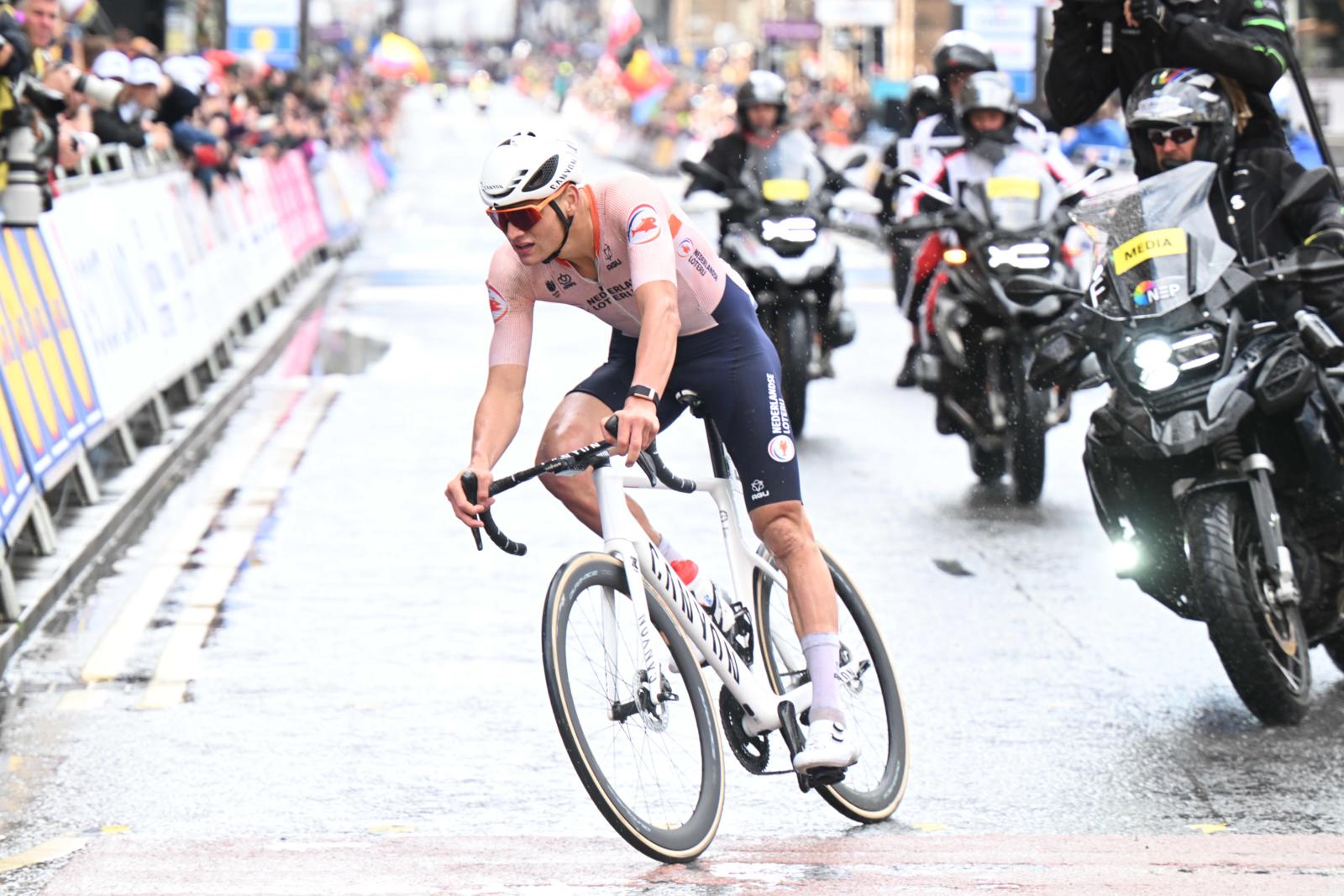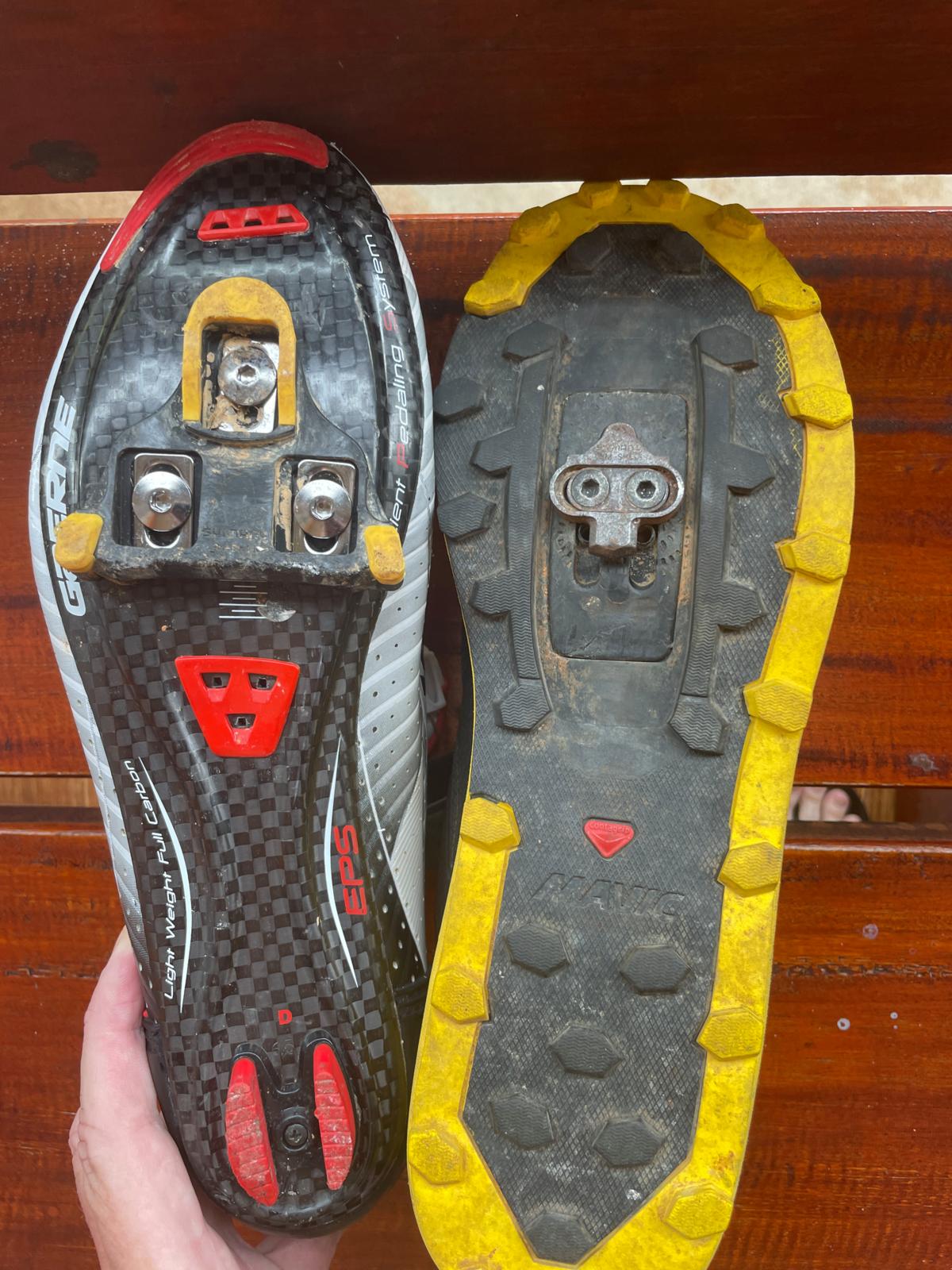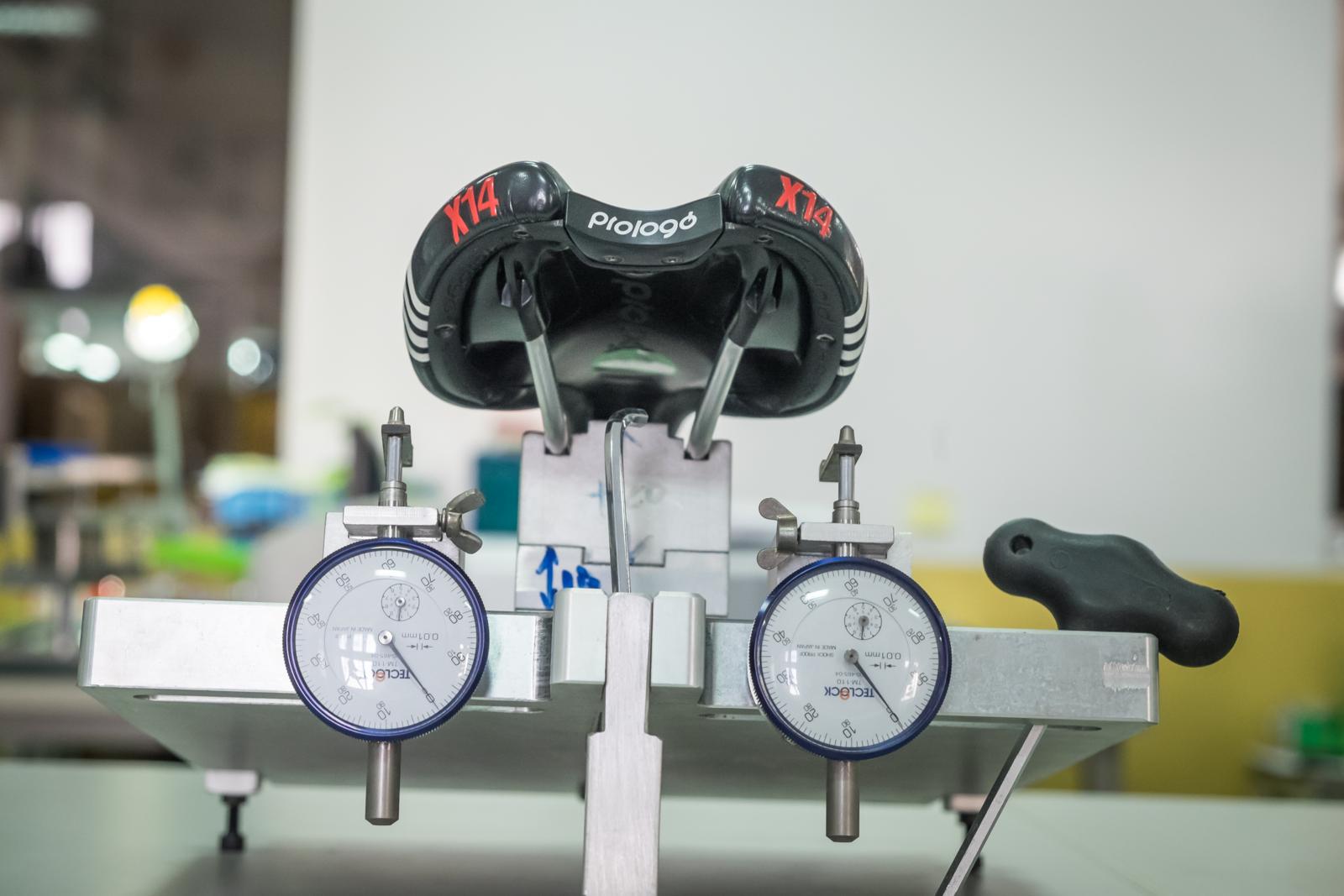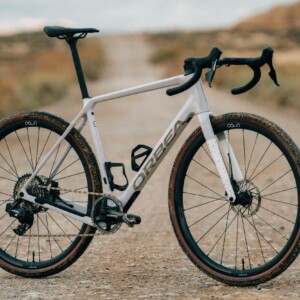From a knee niggle to six months off the bike with chronic pain and trying to figure it all out remotely – learning from the pains of a long tooth who missed the mark and rode into a black hole, writes Steve Thomas.
The past three or so years have been a bit of a time for most of us and depending on your situation you may well have come out of the pandemic with a different outlook on life, be that for the better or worse. My own pandemic yarn is a mixed bag, one that eventually turned into a horror story, and one that has yet to have the closing chapters written.
I’ve been riding and racing bikes all over the world for 45 years now; a long time, and time enough to know my bike set up, my bodily workings and niggles associated with that inside out, or so you’d think.
But then time and age are a strange combo, and that can play tricks with your logic and memory as you get older. I’m not really exactly sure where I got things so badly wrong in regards to my position – but I think the killer blow came about four years ago, when I changed seatposts on my old Litespeed to an inline post, and for a review I fitted a Brooks B17 saddle and immediately noticed that there was a huge difference in saddle-rail stack height. This meant that I dropped my seatpost around 2cm to get the same saddle height.
Somehow, with switching between road, gravel, touring and mountain bikes things got a tad blurry, and I did pick up on a minor knee niggle around that time, but I put it down to old age – it was nothing serious.
Fast forward to the lockdowns, and like many I found myself riding my bike a lot more – mostly my gravel bike. During an easing of restriction and the Southeast Asian burning season I made a dash south to clear air, intent on getting in a couple of weeks, maybe a month of good riding.

Things went pear shaped, and I was unable to leave the area due to the pandemic, and that was 2.5 years ago. In the end I just stayed here – with the same gravel bike I left home with. In many ways the pandemic and the lack of opportunity was good for me. I lost a lot of weight, got into the best shape I’d been in many years and was looking forward to hitting the skies once more and taking on some big adventures.
During this time, I’d had the same knee niggle. It came after about 45 minutes of riding and was then okay 15 minutes later. It did eat away at me, but again I thought it was no big deal, until a week before Christmas that was, the day it “exploded”.
An hour into a ride and the most horrific pain shot through the knee. Somehow, I managed to hobble and ride the 30 minutes home, iced it, massaged, stretched and of course set about reading all about the causes for such things. Being in a remote part of Asia there was nowhere I could turn to for help, and so I rested up in readiness for my ritualistic Christmas Day ride, and that never happened – things just went from bad to worse, and naturally I started searching the internet – and finding the bad stuff that could be behind it all.
To cut a very long story much shorter, from stretching to physio, to full rest, nothing was working – I’d get back on the bike for a few days and then it would all happen again, I was losing all hope – and there was no oracle to turn to, so I started to spiral into a big black hole.
Cycling is, and always has been my life, my job, my hope, and my reasoning – and the possibility of not being able to do that, and getting further away from sorting it was, well – traumatic.
Delving into every far corner of the black hole and I was scraping at the edges, looking desperately for hope and reason. As I’d never had a knee issue in my life – why now? Why at a time when I was back in shape and opportunity was knocking, only I was unable to go out and play with it? I’d been using shoes that were slightly too small, then switched to another pair, and the cleat position was way out, was that it? I shifted the cleats pretty drastically, and within minutes my other knee was in hell. Add to this that I’d been sitting long hours and for many years hunched over a laptop and my shoulder, my neck, and my lower back were all in agony. I’d suffered with the back for decades, but now it was all getting worse, to a point where I could see no hope of getting back on that bike.

The sitting and posture had been a time bomb in the making for years, and add in that I do zero stretching and simply ride a bike or hike in the hills, and well – I was fit, but not flexible, and yet I couldn’t fully find the link between these. I’d also tested new saddles and seatposts in the past year, and one was slipping around 20mm on every ride.
At that point I started to question my position and had someone at home measure my old bikes. Sure enough, the old Litespeed (with the Brooks saddle swap and back) measured the same, but all of the others were 22mm higher. How had I missed this? So, for at least 2.5 years I’d also been riding about an inch lower than I normally do and doing much more of it on the same bike– it was a nasty cocktail laced with poison.
Digital help
To confirm my position suspicions, I found a few apps and systems online that analyse your position, and one in particular was very useful in this process: Bike Fast Fit EZ. To use the app, you are supposed to use a trainer, which I didn‘t have access to, so I simply took my chain off and propped myself against the wall and grabbed the short analysis videos. Yes, it’s not the most accurate option, and each analysis varied a little, but it was surprisingly close in coming up with all of the relevant angles and advice on position – which all pointed to my old position but a little further forward.
Looking at the image and stats on my starting position and it was obvious straight out that it was way low, and I do question how I could miss this, but can also see how things conspired to mask it. Simple, just raise the saddle and do some stretching? Well, not quite, I tried that, and it was just leading to more pain, which was going in a vicious circle around the various joints. I did try incremental adjustments, but nada, I still couldn’t get past 20 minutes without being in pain for days.

The remote bike fit
I’ve always been dubious about bike fitting, at least in my own case, as I’m not looking for performance, switch regularly (or did) between bikes and kit, and have never had any real issues before. By the time I started looking into a remote fit I’d already figured that the saddle height was probably in league with the sir posture, but I’d got to a crazy point of questioning everything, and every time I rode, I tweaked one thing, which led to an issue elsewhere. From the original knee niggle to both knees, to hips, to feet, to shoulders, ribs, back – I had issues with more joints that a ’60s rock star.
As I was seemingly getting nowhere my quest led me to Phil Burt, who was the head physio and bike fit guru for British Cycling and Team Sky. Phil was on the opposite side of the world – but could we fix this remotely? “If you’d asked me about remote fitting in 2019, I’d have said no, you have to do it person. When COVID hit we were inundated with people asking for help, so I shifted my dial, and we offered a thing where we remotely helped people so that they could get cycling again.
“It was really successful, and I found that actually, the things most people are suffering from you can deal with by having certain information, videos, images and so on. Of course, in person is always best because you can look at all of the details and change details on the spot,” Phil told me, so I sent him the videos, the grabs from the app, a very long and detailed case study, my theories etc.

He confirmed many of my findings as true or close enough, and gave a precise plan to get back up, and explained the reasoning, which finally gave me hope. “Its every important for you to understand why you’re doing something, and so you’ll be far more successful. We get a lot of people come in and are very disappointed with fits they’ve had elsewhere, because they haven’t got what they want. I think a lot of this is because these businesses are based on selling people stuff and are incentivised to do that; new shoes, insoles, and saddle, but we try and work with the kit you have already.”
Suddenly things made sense, and I understood the logic of things I’d never even considered – and it would indeed seem that riding too long and too low, along with the excessive desk time had taken its toll. The key things to action in my own evaluation, which may well surprise and help others in a similar situation were to raise my saddle, to bring it forward and to add slight downward tilt, but before any of this – ditch the 175mm cranks that came standard issue on the bike and go to 170mm (at the most) – this one I had a hard time getting my head around, as a tall guy, but after double checking the theory my eyes were opened to it.
“Lifestyle wise, if you sit in a bad posture you will take that onto the bike – hips etc, and that has a knock on effect to the knee, and short cranks helps mitigate that – and we’re only going to get stiffer and older. We did all the research on it, and Bradley (Wiggins) used to have 175mms, but it’s only relevant when you’re at maximum – like in a team sprint, the rpm is low, but the power is high, and crank length is a lever, but what we do is nothing – like two ducks with big paddles, you want to be more serene. Reducing crank length will also help your si/hip flexor muscles.”
Foot Play
Realising that a chain reaction was in place led us to my feet, to ditching the thongs and getting hold of a new and bigger pair of Ekoi MTB shoes (big shoes are impossible to find in Asia), and then also delving into the world of insoles, something I’d never even considered and yet was to prove mind bendingly crucial, as I learned from Phil, and then more so from David Lee, the founder of G8 Performance (NSW), who arguably make the best cycling insoles available.
Being as I was not riding, G8 asked for a short but detailed video of me walking – and what David was able to see in that, and the detail and logical advice that came from it was staggering – were the G8 2620 adjustable insoles the missing ingredient? Well, it took a while to get used to using these, and remarkably, off the bike my knees did ease up, and I now feel naked without the insoles, and yet I would never have even considered this – but it makes sense.
It took me a month to get hold of the cranks and the tools to get them fitted, and to be honest I was so terrified of getting back on the bike only to have my hopes shattered by chronic pain again, which they were. By now I was five months in, and my hip/lower back pain was leading the race, and it was bad. Eventually I managed to find a very good orthopaedic doctor locally, who basically confirmed things, including that sitting and the bike position was at the root of the issue, and within seconds identified the hip abductor as currently the fly in the ointment, and thankfully the x-rays of my pelvic region showed no serious signs of long term damage – which can occur from a long time riding too low. Even so, a month later and I’m still trying to get back on the bike, with short 20-minute flat and easy rides, some basic stretching, trying to avoid the unavoidable desk time – here’s to recovery.
Hang On, Help is on the way
If you want to line up a remote fit with Phil you can contact him via www.philburtinnovation.co.uk, although his near biblical Bike Fit book (available on Amazon) would be a sound place to start with sorting your issues out, or more importantly to prevent then happening.
The G8 insoles are amazing, but not cheap (at AU$193), and even if you are not having issues, they are a wise long term kinetic investment, check out www.g8performance.com

